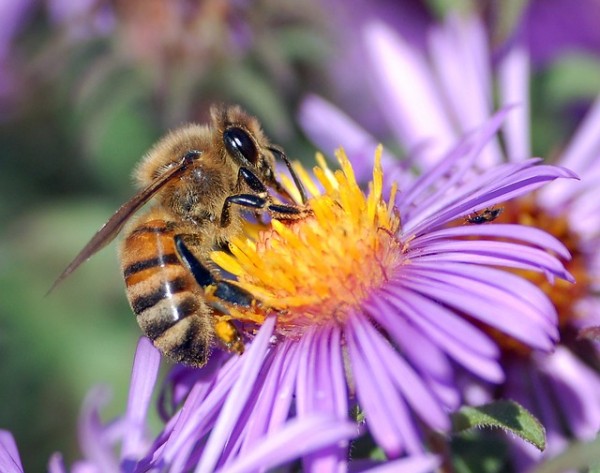Stressed-out Young Bees Cause Colony Collapse
| Ana Verayo | | Feb 11, 2015 08:06 AM EST |
Young bees foraging for nectar.
New research suggests bee die-offs often occur because bees apparently become so stressed-out when young bees start foraging at a time they aren't really cut out for the job.
This collapse of bee colonies has already become an international issue in the U.S. and Australia where death rates have gone up, says entomologist Andrew Barron from Macquarie University. Scientists say the die-offs are caused by environmental factors such as pesticides, pathogens and the lack of nutrition. All these factors make it harder for young bees to adjust.
Like Us on Facebook
Young bees spend two to three weeks inside their hive cleaning and brood rearing before they are ready to fly out and forage for food. Barron claims foraging is the hardest and riskiest job for them as bees forage at a younger age to help with the colony's reserves.
This led to Barron and his team to set-up an experiment to see how younger bees adjust to foraging. The results would help researchers study the impact of this trend on colony resources.
Researchers tracked and tagged thousands of bees in three experimental hives and three controlled ones using a small radio tracking device. They then removed the older bees from the experimental hives so younger bees can search for food.
With the use of radio tracking, researchers were able to record each individual bee and the times they started foraging; how many trips they made; how long they were out there and how long they were gone from the colony.
Researchers observed that young foragers didn't do a complete job of foraging and died faster than the older ones. When bees start foraging at a young age, they live shorter and complete fewer successful trips. They also took longer to complete a foraging trip.
These young ones are worse at foraging since they're less experienced when it comes to navigation and their flight muscle aren't properly developed.
This study was published in the Proceedings of the National Academy of Sciences.
TagsBees Get Stressed Out Too That Causes Colony Collapses, Bees, bee colony collapse, stress young bees colony collapse die offs, bee die offs
©2015 Chinatopix All rights reserved. Do not reproduce without permission
EDITOR'S PICKS
-

Did the Trump administration just announce plans for a trade war with ‘hostile’ China and Russia?
-

US Senate passes Taiwan travel bill slammed by China
-

As Yan Sihong’s family grieves, here are other Chinese students who went missing abroad. Some have never been found
-

Beijing blasts Western critics who ‘smear China’ with the term sharp power
-

China Envoy Seeks to Defuse Tensions With U.S. as a Trade War Brews
-

Singapore's Deputy PM Provides Bitcoin Vote of Confidence Amid China's Blanket Bans
-

China warns investors over risks in overseas virtual currency trading
-

Chinese government most trustworthy: survey
-

Kashima Antlers On Course For Back-To-Back Titles
MOST POPULAR
LATEST NEWS
Zhou Yongkang: China's Former Security Chief Sentenced to Life in Prison

China's former Chief of the Ministry of Public Security, Zhou Yongkang, has been given a life sentence after he was found guilty of abusing his office, bribery and deliberately ... Full Article
TRENDING STORY

China Pork Prices Expected to Stabilize As The Supplies Recover

Elephone P9000 Smartphone is now on Sale on Amazon India

There's a Big Chance Cliffhangers Won't Still Be Resolved When Grey's Anatomy Season 13 Returns

Supreme Court Ruled on Samsung vs Apple Dispute for Patent Infringement

Microsoft Surface Pro 5 Rumors and Release Date: What is the Latest?










